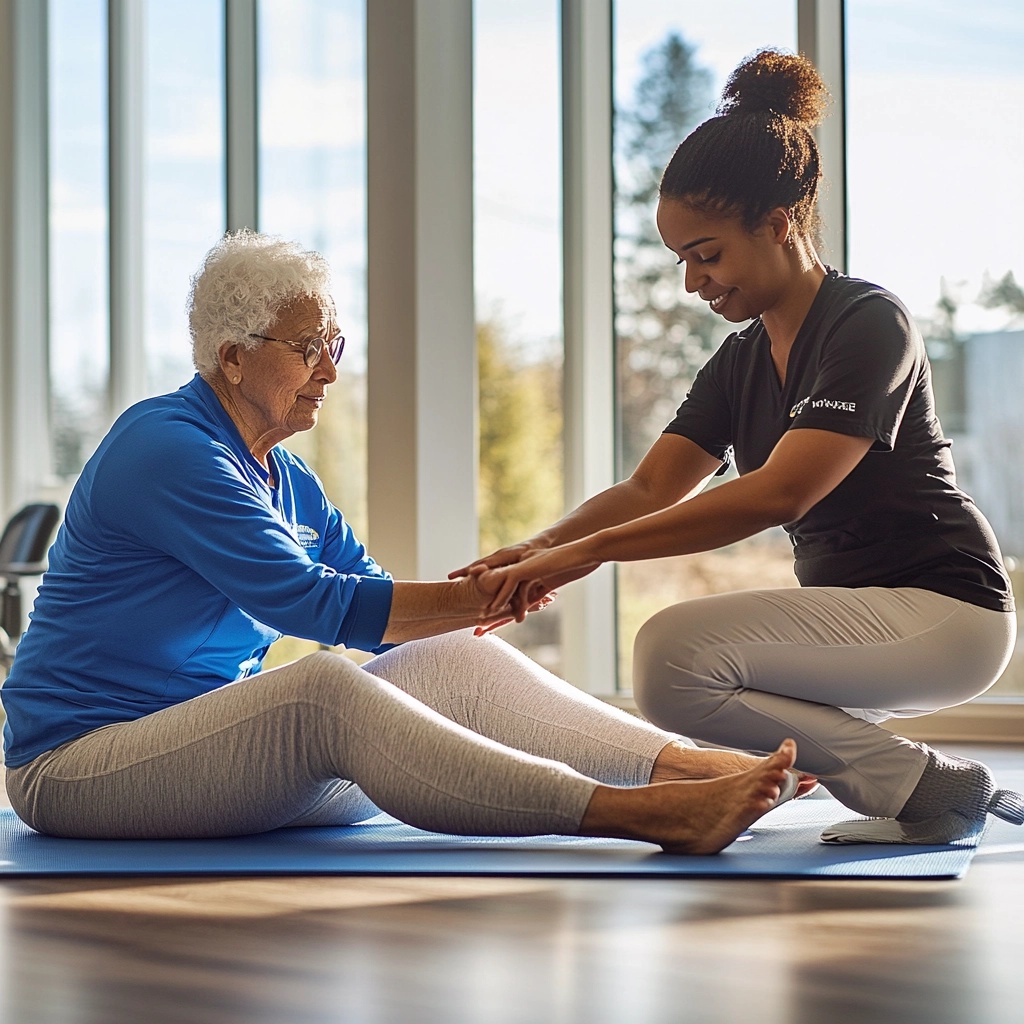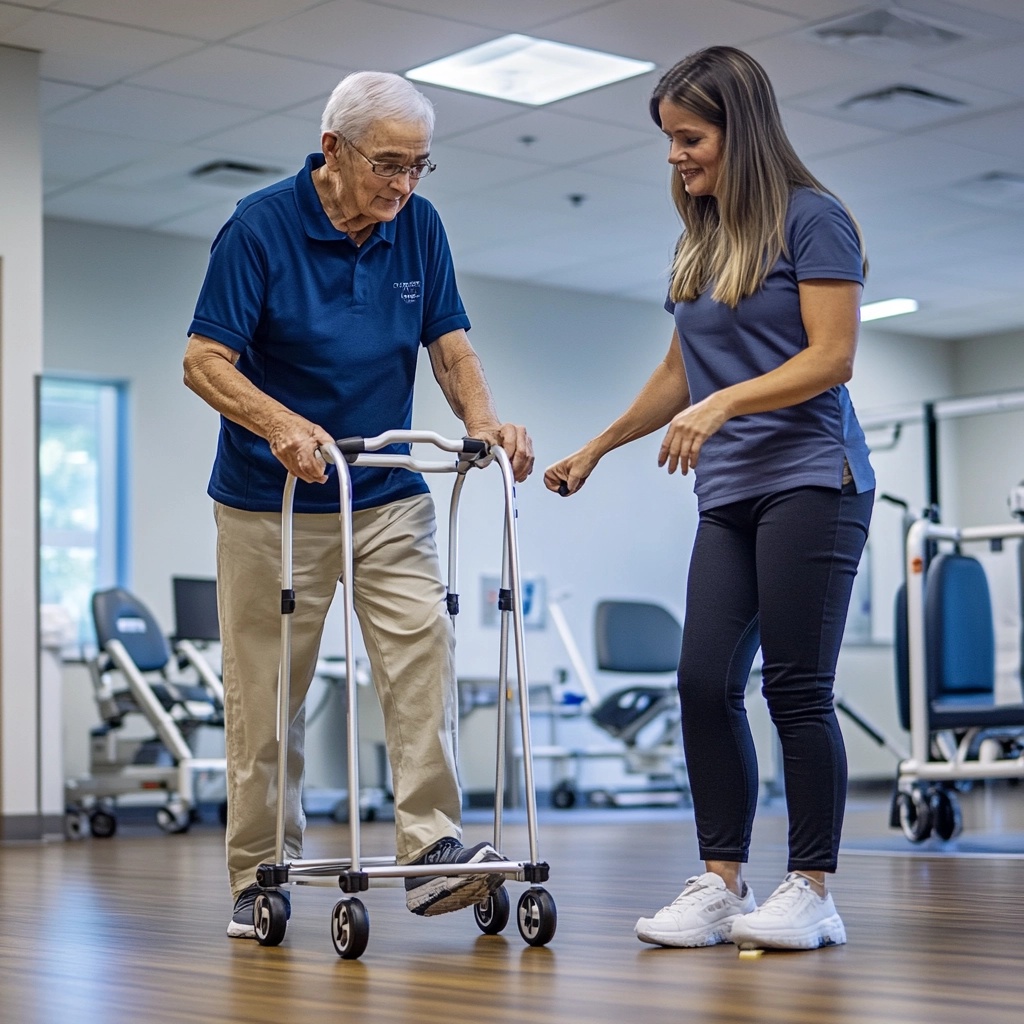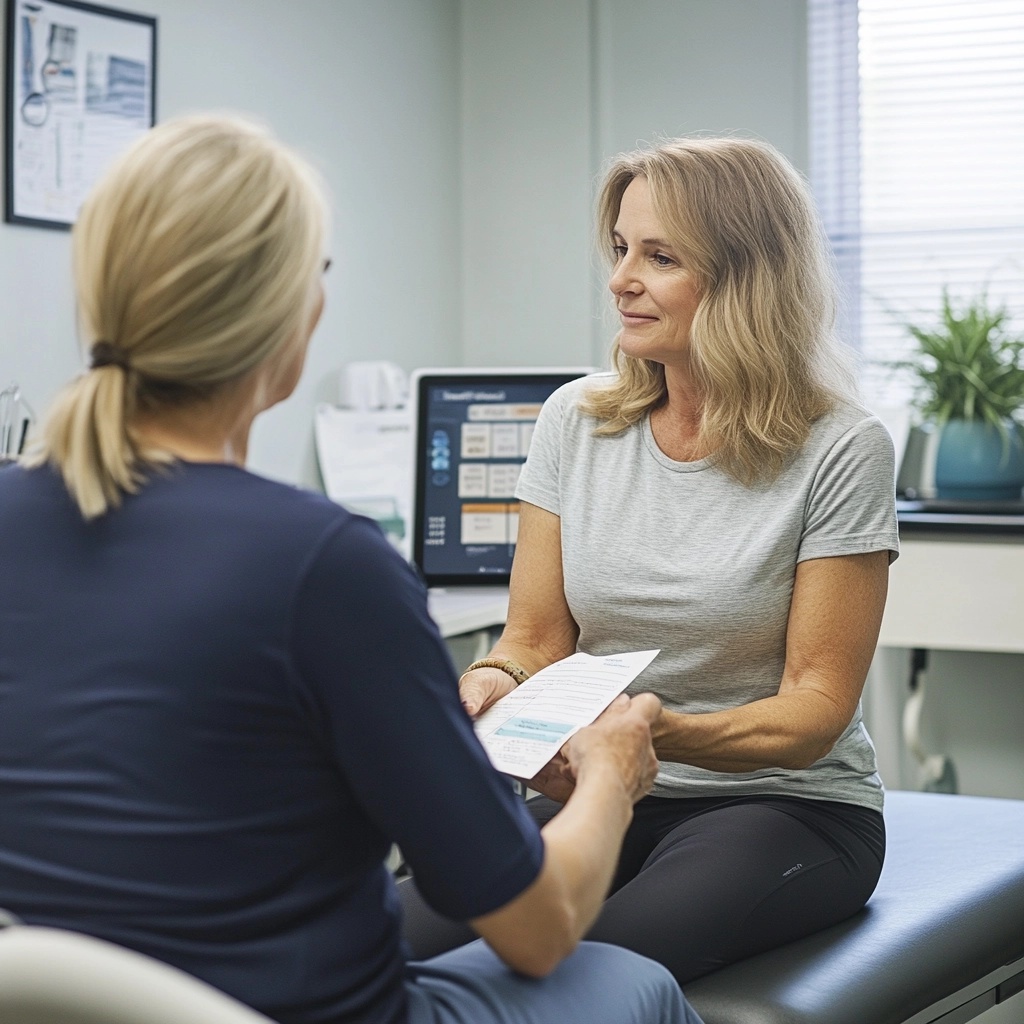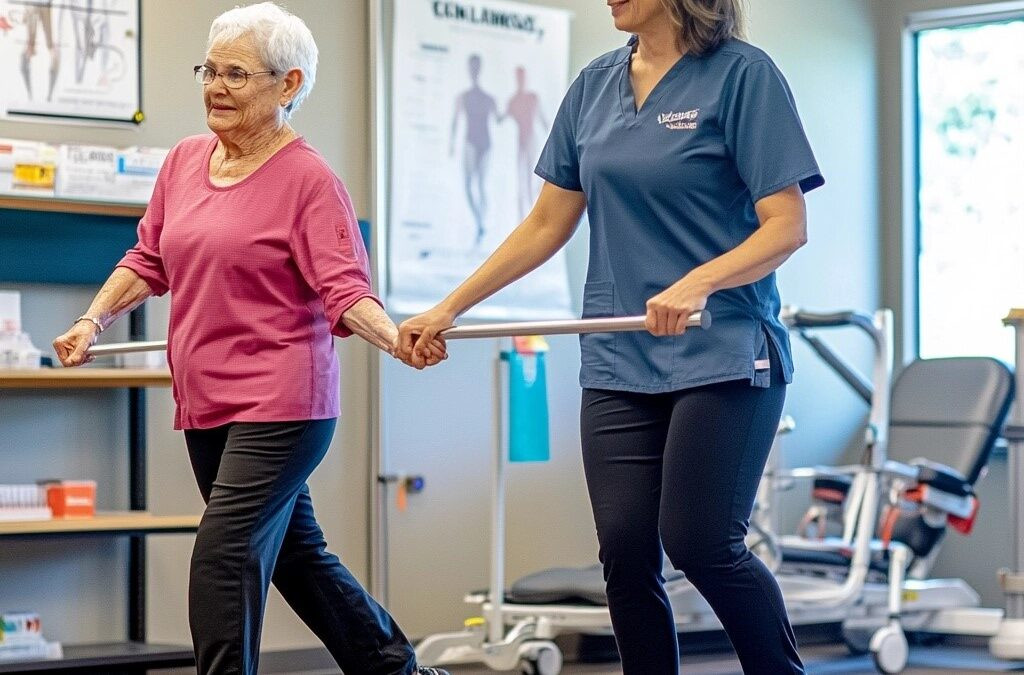Struggling with everyday movements such as walking to the kitchen, climbing stairs, or getting out of bed can be frustrating and discouraging. Whether it’s due to a recent surgery, chronic pain, or the natural effects of aging, limited mobility can affect your independence and overall quality of life. If you’re in Clifton, NJ and finding it harder to move comfortably, physical therapy may be the key to regaining strength, confidence, and freedom of movement.
In this guide, we’ll share 10 expert-backed tips to help improve your mobility through physical therapy. From setting achievable goals to managing pain and improving posture, these practical strategies are designed to support your progress every step of the way.
Understanding Physical Therapy
To see how physical therapy can improve your mobility, it’s helpful to start with a clear understanding of what it involves and the benefits it can offer.
What Is Physical Therapy?
Physical therapy involves the evaluation and treatment of abnormal physical function related to injury, disability, or disease. Alternative Chiro develops personalized treatment plans for each individual’s specific needs, ensuring the safest and most effective recovery process.
Benefits of Physical Therapy for Mobility
PT enhances strength, flexibility, balance, and coordination which are all key components of mobility. Studies show that physical therapy can significantly reduce back pain, improve gait in older adults, and even assist in post-operative recovery such as knee replacement or hip pain.
Common Conditions Treated
Physical therapy clinics in Clifton, NJ offer rehabilitation services for a variety of conditions, including:
- Arthritis – Improve joint function and reduce inflammation
- Sciatica – Alleviate nerve pain and restore mobility
- Sprains and Strains – Support recovery and prevent re-injury
- Post-Surgical Recovery – Regain strength and function after procedures
- Stroke Recovery – Rebuild coordination, balance, and independence
- Sports Injuries – Restore movement, strength, and flexibility
Whether you’re managing chronic pain or recovering from an injury, partnering with a trusted physical therapy clinic can significantly enhance your quality of life.
The Role of Physical Therapy in Enhancing Mobility
Physical therapy (PT) is a science-backed treatment approach designed to improve movement, restore function, and reduce pain. Skilled physical therapists help patients recover from injuries, prevent future problems, and address musculoskeletal issues. In a therapy clinic in Clifton, techniques like manual therapy, soft tissue mobilization, and occupational therapy are part of comprehensive rehabilitation services aimed at enhancing your range of motion and overall mobility.
Tip 1: Set Clear Mobility Goals
The first step toward improving mobility is knowing exactly what you’re working toward and how to get there.
Importance of Goal Setting
Just like a roadmap guides your journey, clear mobility goals help you measure your progress. Whether it’s walking a block without pain or returning to a favorite sport, goals help maintain motivation and track achievements.
Collaborating with Your Therapist
Your physical therapist will help you define realistic, measurable goals. A personalized treatment approach ensures you’re not following a generic plan, but one designed around your individual needs and health status.
Tip 2: Incorporate Regular Stretching

Stretching may seem simple, but when done consistently and correctly, it plays a powerful role in improving mobility and supporting your physical therapy goals.
Benefits of Stretching
Stretching increases flexibility, enhances blood flow, and reduces stiffness. It also prepares muscles for movement and helps prevent injuries.
Research published in the Journal of Strength and Conditioning Research found that regular stretching can significantly improve range of motion and reduce the risk of musculoskeletal injuries, particularly in older adults and those undergoing physical rehabilitation.
Recommended Stretching Exercises
Simple stretches like hamstring stretches, calf stretches, and shoulder rolls can be performed daily. Your therapist may recommend additional targeted exercises based on your problem areas.
Tip 3: Strengthen Core Muscles
Building a stronger core is a vital part of restoring and maintaining your mobility.
Role of Core Strength in Mobility
Your core is the foundation of all movement. It supports your spine, aids balance, and enables efficient motion. Weak core muscles can increase your risk of falls and impair your range of motion.
A study published in The Journal of Geriatric Physical Therapy found that core-strengthening programs significantly improved balance and functional mobility in older adults, reducing fall risk and enhancing daily movement.
Effective Core Exercises
Planks, pelvic tilts, and bridge exercises are excellent ways to build core strength. These can be part of a therapy treatment plan under supervision at your local Clifton, NJ therapy clinic.
Tip 4: Engage in Balance Training
Regaining mobility isn’t just about strength; it’s also about control. Balance training plays a critical role in helping you move with confidence and stability.
Importance of Balance
Good balance is essential for safe and effective mobility, especially for older adults or those recovering from surgery, injury, or neurological conditions. Poor balance increases the risk of falls, which are a leading cause of injury-related hospital visits among seniors.
According to research published in the Journal of Aging and Physical Activity, targeted balance exercises can significantly reduce fall risk and improve postural control in older adults.
Balance Exercises
Incorporating exercises like heel-to-toe walks, single-leg stands, and stability ball routines can dramatically enhance your ability to stay upright and steady during everyday tasks. These exercises challenge your body to stabilize itself, improving coordination and joint response time.
Tip 5: Utilize Assistive Devices When Necessary

Sometimes, a little extra support can make a big difference. Assistive devices are tools that can empower your recovery and protect your independence.
Understanding Assistive Devices
Assistive devices like canes, walkers, crutches, and braces provide crucial support for those experiencing weakness, joint instability, or pain. They can be used temporarily during recovery or as a long-term aid for chronic conditions. These tools help redistribute weight, improve balance, and reduce the risk of falls, allowing patients to move more safely and confidently.
Proper Usage and Benefits
Your physical therapist will teach you how to use assistive devices correctly. This ensures your safety and prevents new injuries. Proper device use can be life-changing for patients in need of physical therapy.
Tip 6: Stay Active with Low-Impact Exercises
Movement is medicine. You don’t need high-intensity workouts to see results. Low-impact exercises can keep you active, improve mobility, and support a faster recovery without putting unnecessary stress on your joints.
Benefits of Low-Impact Activities
Low-impact exercises such as swimming, walking, stationary biking, and water aerobics provide cardiovascular benefits while being gentle on the body. These activities are especially effective for individuals with arthritis, joint pain, or those recovering from orthopedic procedures. A study found that regular low-impact aerobic exercise helped reduce joint discomfort and improve physical function in adults with chronic musculoskeletal conditions.
Incorporating Activities into Daily Routine
Make exercise a habit by setting a schedule. Even 30 minutes a day of low-impact activity can complement your therapy treatment and support long-term mobility.
Tip 7: Monitor and Manage Pain

Pain is often part of the healing process. Knowing how to respond to it can make all the difference in your recovery.
Recognizing Pain Signals
It’s normal to feel some soreness as your body adjusts to new movements and exercises. However, sharp, sudden, or worsening pain could indicate strain or injury. Learning to distinguish between productive discomfort and harmful pain is essential. Your physical therapist will guide you in understanding these signals and adjusting your therapy plan accordingly to avoid setbacks.
Pain Management Techniques
Use techniques like soft tissue mobilization, cold/heat therapy, and targeted stretching to relieve discomfort. Your therapy clinic in Clifton will likely incorporate these into your sessions.
Tip 8: Maintain Proper Posture
How you hold yourself throughout the day affects how well you move. Improving posture can lead to better mobility and fewer aches over time.
Impact of Posture on Mobility
Poor posture can cause muscle imbalances, reduce your range of motion, and place extra stress on your joints. Over time, this can contribute to chronic pain and limit mobility. Maintaining proper alignment helps your body move more efficiently and reduces the risk of injury during daily activities.
Posture Correction Strategies
Your physical therapist can assess your posture and provide personalized guidance, including ergonomic recommendations and corrective exercises. Strengthening your core, stretching tight muscles, and adjusting your workstation setup can all contribute to better alignment. These strategies not only reduce strain on your body but also support long-term functional movement and mobility.
Tip 9: Stay Consistent with Therapy Sessions
Progress in physical therapy doesn’t happen overnight; it’s built through steady, ongoing effort. That’s why consistency is key.
Importance of Regular Attendance
Each session builds on the last. Skipping appointments can interrupt your progress, delay recovery, and make it harder to maintain motivation. Regular attendance allows your physical therapist to track your improvement, fine-tune your plan, and ensure you’re safely advancing toward your mobility goals.
Overcoming Common Barriers
Life gets busy, but there are ways to stay on track. If you’re having trouble making it to appointments, ask your clinic about scheduling flexibility or virtual therapy options. Setting phone reminders or pairing sessions with another routine (like errands or work breaks) can also help. Most importantly, remember that your physical therapy team is there to support you.
Tip 10: Communicate Openly with Your Therapist
A strong therapist-patient relationship is essential to a successful recovery. Open, honest communication helps ensure you’re on the right track and getting the most out of every session.
Sharing Feedback and Concerns
If something doesn’t feel right (whether it’s pain, discomfort, or lack of progress) speak up. Your therapist depends on your feedback to fine-tune your care. Clear communication can make a meaningful difference in how effectively your body responds to treatment.
Adjusting Treatment Plans Accordingly
Recovery isn’t a straight line. As your condition evolves, your plan should too. Your therapist can modify exercises, introduce new techniques, or shift focus based on your current goals and physical needs. Ongoing dialogue ensures your therapy remains personalized and results-driven.
Looking for a Holistic Approach?
If you’re exploring complementary care to support your mobility and healing, consider chiropractic services as part of your wellness plan. One respected provider in the Clifton, NJ area is Dr. Andreas Skounakis, a Doctor of Chiropractic with over 16 years of experience. Dr. Skounakis emphasizes multi-disciplinary care (combining rehabilitation, physiotherapy, and lifestyle education) to restore optimal health efficiently and effectively. With a background in exercise science and experience treating everyone from everyday patients to professional athletes, Dr. Skounakis offers a patient-centered approach that aligns well with physical therapy programs.
Conclusion
Improving your mobility through physical therapy in Clifton isn’t just possible, it’s probable when you follow expert advice. From setting goals and stretching to posture correction and consistent attendance, these tips are designed to meet your individual needs with exceptional and compassionate care.
Don’t wait until pain starts limiting your lifestyle. If you’re experiencing mobility issues, we invite you to schedule an appointment with us at Alternative Chiropractic. Dr. Skounakis and our friendly, professional team are dedicated to helping you recover and feel your best. We’re proud to support every patient on their journey to better health.




